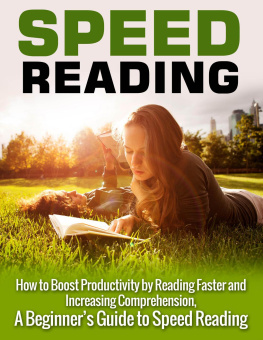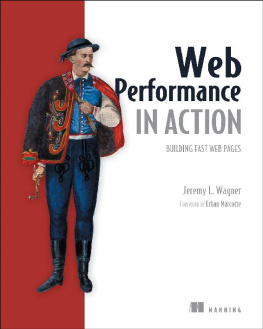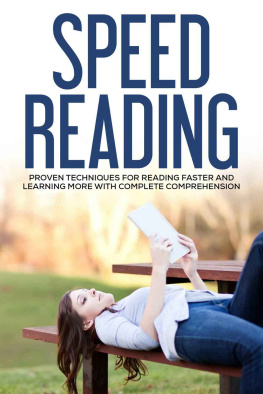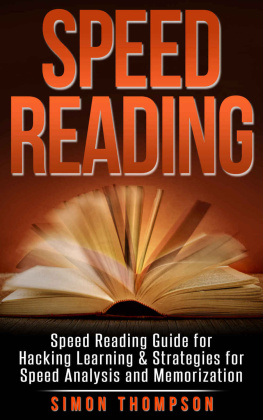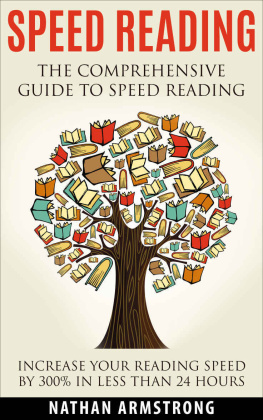Cale - Coding for Speed: A Hackers Guide to a Faster Web
Here you can read online Cale - Coding for Speed: A Hackers Guide to a Faster Web full text of the book (entire story) in english for free. Download pdf and epub, get meaning, cover and reviews about this ebook. year: 2014, genre: Computer. Description of the work, (preface) as well as reviews are available. Best literature library LitArk.com created for fans of good reading and offers a wide selection of genres:
Romance novel
Science fiction
Adventure
Detective
Science
History
Home and family
Prose
Art
Politics
Computer
Non-fiction
Religion
Business
Children
Humor
Choose a favorite category and find really read worthwhile books. Enjoy immersion in the world of imagination, feel the emotions of the characters or learn something new for yourself, make an fascinating discovery.
Coding for Speed: A Hackers Guide to a Faster Web: summary, description and annotation
We offer to read an annotation, description, summary or preface (depends on what the author of the book "Coding for Speed: A Hackers Guide to a Faster Web" wrote himself). If you haven't found the necessary information about the book — write in the comments, we will try to find it.
Cale: author's other books
Who wrote Coding for Speed: A Hackers Guide to a Faster Web? Find out the surname, the name of the author of the book and a list of all author's works by series.
Coding for Speed: A Hackers Guide to a Faster Web — read online for free the complete book (whole text) full work
Below is the text of the book, divided by pages. System saving the place of the last page read, allows you to conveniently read the book "Coding for Speed: A Hackers Guide to a Faster Web" online for free, without having to search again every time where you left off. Put a bookmark, and you can go to the page where you finished reading at any time.
Font size:
Interval:
Bookmark:
A jug fills drop by drop
Bhudda
As a way of saying thank you for your purchase, Im offering a free checklist to the readers of this book. To get your Checklist Speed, send an email to **checklist@michaelcale.com**.
Disclaimer
While all reasonable attempts have been made to verify the information provided in this work, the author does not assume any responsibility for errors, omissions, or contrary interpretations of the subject matter. The views expressed in this book are those of the author alone and should not be taken as expert instruction. The reader is responsible for their own actions.
A Special Thanks
Several tables and images in Chapter 8 are courtesy of .
Dave Brailsford was asked to do what had never been done.
As the new General Manager of Great Britains professional cycling team (Team Sky), he was asked to lead the team to a victory in the Tour de France.
Inspired by the book Moneyball by Michael Lewis, Brailsford took a clean review of cyclings standard measurements and thought processes. He developed a new and innovative approach.
Initially, there were no grand, sweeping changes to the team training program. But there were hundreds of tiny, seemingly trivial changes. His goal was a 1 percent improvement in every area. And he meant every area.
He analyzed and focused on areas that other teams considered meaningless, or had never considered. He theorized that the combination of these tiny improvements would, in the end, be larger than their sum.
When he was hired, he was told the team goal was to win the Tour de France in 5 years. The team won it in two.
People often associate marginal gains with pure technology, but it is far more than that. It is about nutrition, ergonomics, psychology. It is about making sure the riders get a good nights sleep by transporting their own bed and pillow to each hotel. It is about using the most effective massage gel. Each improvement may seem trivial, but the cumulative effect can be huge. Dave Brailsford
Yes, he said transporting their own bed to each hotel. Actually, it was just the mattress, duvet, sheets, and pillows. And Team Sky staff cleaned each hotel room before arrival to make sure the athletes were comfortable.
Even the teams bus was designed with a focus of making life easier for the athletes. It has custom seats, a cinema, and showers to ease the pre and post-race routines. It has a meeting room for strategy sessions whose glass becomes opaque at the touch of a button. The large black bus is nicknamed the Death Star.
Team Sky went on to dominate the 2012 Summer Olympics. Great Britain won 12 total medals in Cycling including 8 Gold, more than double the medal count of any other nation. Team Sky followed that up with a back-to-back win of the Tour de France in 2013 as well.
The reason we digress into cycling is to introduce this valuable concept.
The aggregation of marginal gains is the exact approach that will dramatically improve performance of web sites and services.
Taken alone, many of the approaches in this book may not provide notable (or even noticeable) improvements. But taken on the whole, there is room to significantly improve the speed of web services.
For more on incorporating this principle into your personal life, please read This Coach Improved Every Tiny Thing by 1 Percent and Heres What Happened by James Clear http://jamesclear.com/marginal-gains.
In general, the techniques discussed in the book are presented with major techniques first. That is, the techniques presented in the early chapters will, in general, give you more improved performance than the techniques listed in later chapters.
Now, before we get into the specific techniques, lets review the importance of speed in web design and why it matters.
The research of human perception has identified three important speed limits for any user interface.
- 0.1 seconds - the upper limit where the user feels the application is responding immediately. For example, touch events on a touchscreen.
- 1.0 seconds - the upper limit where the user feels that the application is working, but does not feel sluggish. The user notices the delay, but does not lose their sense of focus.
- 10 seconds - the upper limit for users to retain interest in the task. Best practices for delays in excess of ten seconds are a progress indicator and a method for the user to abort the task.
These are thresholds of human perception that have been repeatedly verified by decades of research. This is one reason why Google recommends that web pages load in less than one second on mobile devices.
Users love speed.
- 74% of mobile users will abandon a site after a 5-second wait.
- 69% of tablet users expect a site to load in 2 seconds or less.
According to Akamais State of the Internet, mobile data volume is doubling year-over-year. It wont be long before desktop web use is going to be dwarfed by mobile use.
All these mobile devices are radios. When they connect over a cellular network, they must establish a radio connection before any data can be sent or received. Establishing a radio connection can take several seconds. Once established, each radio connection has a timeout period. After this time period, the channel goes idle and a new radio channel must be established.
The causes latency when mobile devices connect over cellular networks. In the US, round-trip transmissions on 3G networks are normally 100-450 ms. On 4G networks, they are usually 60-180 ms. In the UK 3G network latency is 289-2,653 ms for 3G and 35-187 ms for 4G.
This latency is unavoidable, so web developers must structure their work to be as fast as possible to deliver the best user experience.
According to Google, the average page load time for mobile is just over 7 seconds. The median page load time is slightly more than 3 seconds, so there are some extremely slow web sites that are skewing the average.
The majority of web pages load in between 1 and 7 seconds on a mobile device. Less that 10% of web pages load in 1 second or less on mobile. That should be your goal - one second load time or less on a mobile device. That will put you in the top 10%.
According to Google, average web page size has increased 56% since last year.
In 2010, Google announced they would start using page load times as a factor in how they rank web pages.
So if search engine results are important to you, then speed should be important to you as well.
Amazon reported that every 100ms decrease in page load time increased revenue by 1%.
Mozilla reduced the loading time for their Firefox download page from an average of 7 second to 4.8 seconds. In an A/B test between the two sites, the faster site had 15% more download conversions.
Google discovered that increasing latency by 400ms reduced the number of searches by 0.2%.
Your users demand speed
Font size:
Interval:
Bookmark:
Similar books «Coding for Speed: A Hackers Guide to a Faster Web»
Look at similar books to Coding for Speed: A Hackers Guide to a Faster Web. We have selected literature similar in name and meaning in the hope of providing readers with more options to find new, interesting, not yet read works.
Discussion, reviews of the book Coding for Speed: A Hackers Guide to a Faster Web and just readers' own opinions. Leave your comments, write what you think about the work, its meaning or the main characters. Specify what exactly you liked and what you didn't like, and why you think so.


